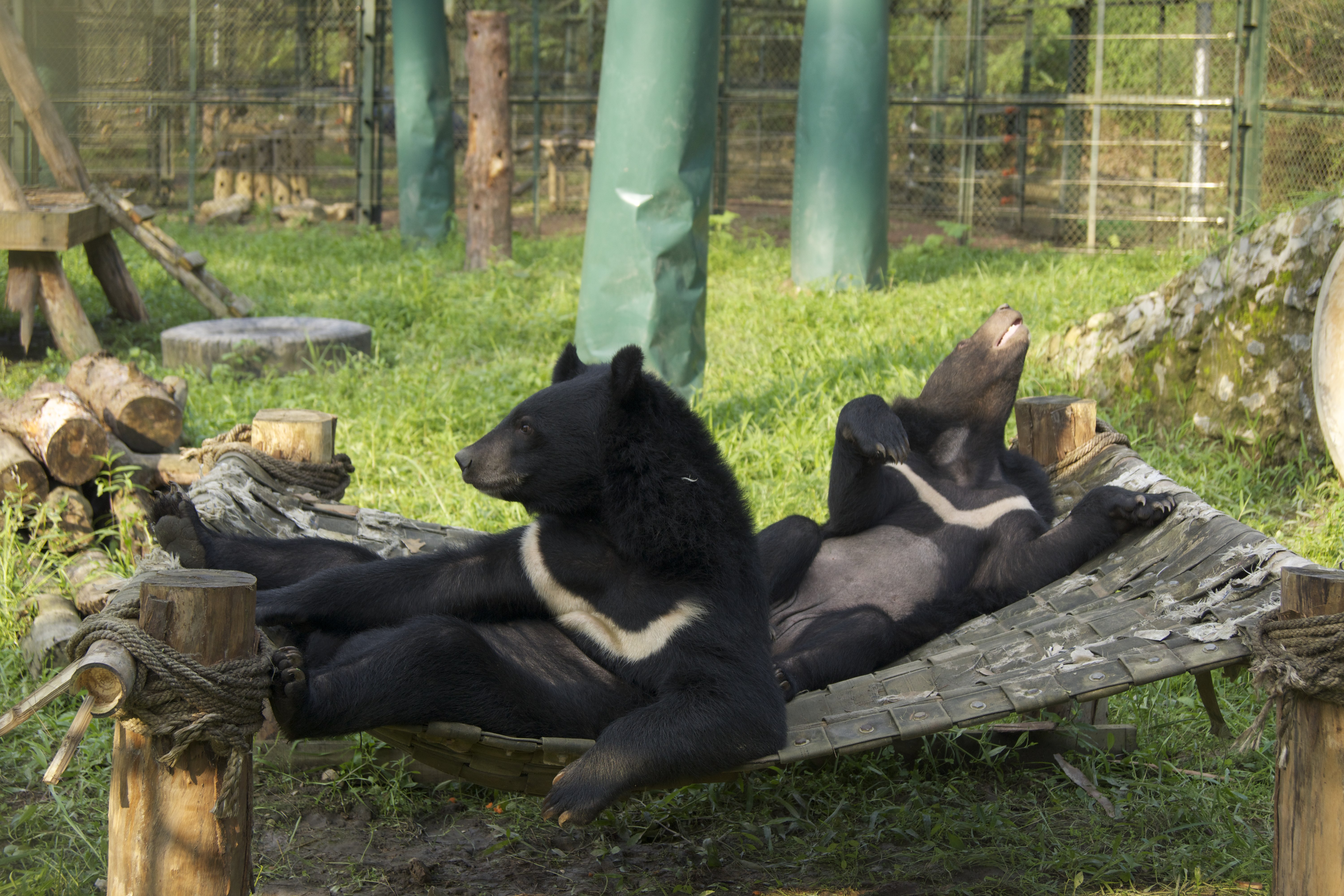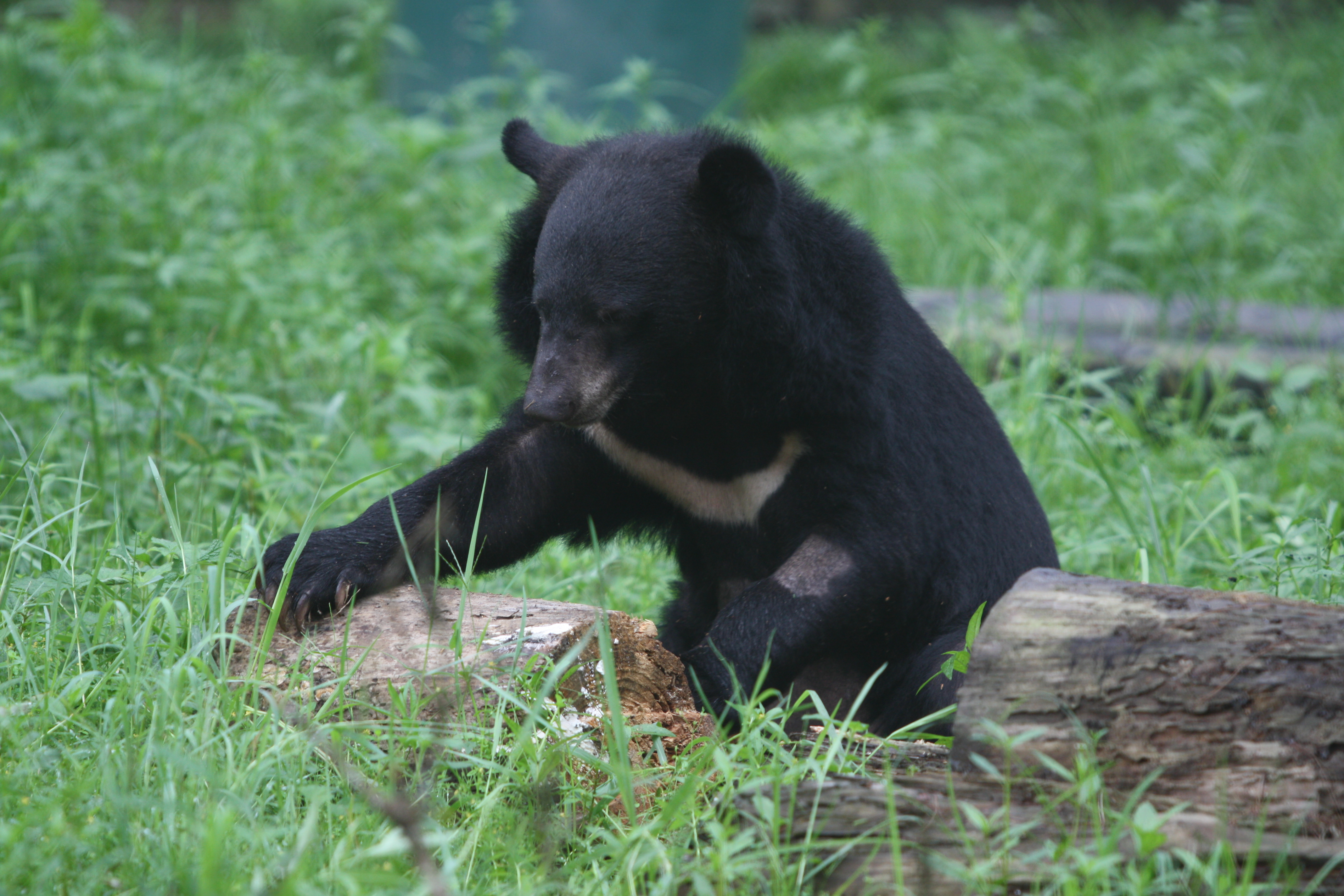Are the moon bears going bald?
15 May 2014
The short answer is no – but the more observant among you may have noticed that pictures of our bears often reveal missing patches of fur. The bears aren’t balding and it’s not an illness – in fact it’s linked to their own wellbeing. We spoke to our vet team to find out what it’s all about.
Every two years, bears at our sanctuaries in China and Vietnam will undergo a health check.
Such regular checks are absolutely necessary for former bile-farmed bears who typically suffer a variety of debilitating health issues.
Joost Philippa, Senior Vet at Animals Asia’s Vietnam Bear Rescue Centre said:
“Ideally, you find nothing. Potentially, you can find anything. Like all wild animals, bears hide their symptoms very well as a survival strategy. That’s why some conditions can only be found by direct contact under anaesthesia.”
Direct contact to skin beneath the fur, requires that patches of the bears’ thick coats are shaved. During a check, the neck, abdomen and arm are typically clipped.
Joost explains:
“We shave the arm so that intravenous fluids can be given as a preventative measure during the anaesthesia. This allows us to counteract hypotension as changes in bloodpressure can be caused by stress to the heart and other organs which may occur during anaesthesia.”
“The neck is shaved to take a large blood sample. We test the blood for a range of parameters and store it for future reference and disease investigations. The hair is shaved to help us find the vein and so that the skin can be properly disinfected beforehand.”
“The abdomen is shaved to conduct a thorough ultrasound examination. In many bears from which bile has been extracted, tumors will be found at some point in their life, especially in the liver.”
“In some cases it may be possible to get an image without shaving. However, the ultrasound images will be of better quality if the hair is shaved. As we are looking for small changes in the abdominal organs which may be developing tumors, we shave the hair to help us detect abnormalities as early as possible.”
Years of living in cages and enduring bile extraction causes illnesses such as tumors, arthritis and high blood pressure. But these are far from the limits of a bears’ health check.
Joost said:
“We examine the eyes, teeth, joints and bones, bloodvalues, skin condition, urine, heart function, listen to the function of lungs, heart and intestinal movement, as well as palpate and perform ultrasound of the abdomen to detect abnormalities. So it’s a very thorough check.”
As was seen in the recent scare during Ti Map’s rescue, anaesthesia always carries a small risk which is why younger healthy bears, which have been confiscated before bile extraction, may not receive a health check every two years.
While the drugs have been used safely in bears for many years, there may always be an unknown underlying health condition in the bear, or an individual sensitivity to the drug.
Animals Asia founder and CEO, Jill Robinson MBE said:
“We’ve grown quite used to the sight of bears with patches of fur missing and to us it’s a positive sign that they are being cared for and have been checked recently for any signs of ill health. Seeing a content bear warming their recently shaved bare belly in the sun is a heart warming sight – and it soon grows back.”
BACK







 5 reasons the dog meat trade must end
5 reasons the dog meat trade must end
 New year, new home for Christmas the Bear!
New year, new home for Christmas the Bear!
 Veterinary welfare training – pain management
Veterinary welfare training – pain management